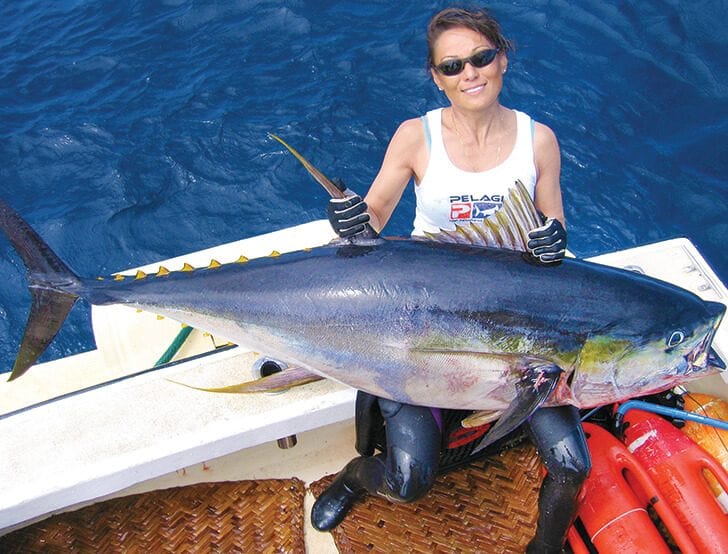More than a few spearos have made spearing a tuna a piece of their bucket list. Some are surprised to hear me say that spearing a tuna is actually pretty easy. It’s the before and after activities that are more challenging, along with the planning.
Due to safety considerations, it’s not the first species one should aspire to start with. A more likely progression would start with reef hunting for hogfish and red groupers, then on to mutton snappers and black groupers, and then perhaps some bluewater action with mahi and wahoos.
In addition to experience, going after yellowfin tuna will likely require you to travel, and it will also require special rigging to withstand the increased speed and size of this awesome prey. These two factors are key. Traveling to the right place will increase your chances of seeing them, and having the right equipment will ensure a successful capture.
Currently, the most active places to spear yellowfin tuna include Louisiana, Mexico, Costa Rica, and Panama. In more recent times, spearos have been landing bluefin tuna off the coast of California. The best way to find out which places are productive is through word-of-mouth and social media.
After selecting the right destination, here is what you will need to take in terms of equipment. Instead of the standard speargun with a reel, you will use a specially designed bluewater tuna gun. This will most likely be 60 to 70 inches long, the diameter of the shaft will be thicker, and it will have four to five bands (versus 1 to 2). It will have a slip tip and cable (versus flopper and mono) for a more sure hold on a strong fish. It will also have a break-away setup instead of a reel so that the rig (and fish) are attached to your float instead of your gun.
There are several good companies that make this specialized equipment, such as Wong Spearguns, Riffe, Omer, Sporasub, Rob Allen, Gannet, and more. Retailers include SpearfishingWorld.com, SpearAmerica.com, and many local dive shops.
Here are some quick tips to make sure your travel is fun, safe and productive:
- Go with a mentor or guide the first few times. Safe diving requires that you look out for one another, especially when bluewater hunting.
- Choose a reputable charter that specializes in tuna spearfishing, as this requires an experienced captain who can give you good “drops.”
- Use a Sportube to pack your spearguns and use the wetsuits for padding. Tell TSA you have “fishing equipment” rather than using the word “speargun.”
- Make sure all body parts are clear of the line when shooting a tuna. Tunas will frequently sound and have a strong initial run.
- After cinching up the line through a clip on the float, use a second speargun for the kill shot. Do not handle a “hot tuna” with your hands.
Don’t be disappointed if it takes a few trips to land your first tuna. It may take some effort, but in the end, it’s worth it. It’s hard to think of a fish that is more beautiful to look at or more delicious to eat.
Sheri is a world-record holder, host of Speargun Hunter and producer of The Blue Wild Ocean Adventure Expo in Ft. Lauderdale, Florida. Follow “Sheri Daye” and “The Blue Wild” on Facebook and Instagram.
